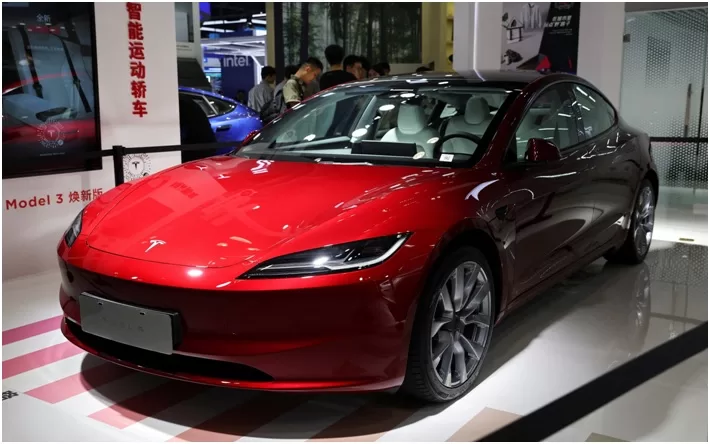Changes in Federal Tax Credits: Tesla’s Model 3 Affected

Highlights
- Tesla’s Model 3 Rear-Wheel Drive and Long Range won’t qualify for the $7,500 federal tax credit after December 31.
- U.S. Treasury’s new battery-sourcing rules, effective January 1, aim to diversify the EV supply chain and reduce reliance on Chinese components.
- To secure the full tax credit, buyers urged to take delivery of affected Model 3 variants by December 31, aligning with current Inflation Reduction Act guidance.
- April guidelines reduced tax credits for Model 3 Rear-Wheel Drive to $3,750, with other Tesla models maintaining the full benefit.
- In July, Tesla foreshadowed a reduction in the $7,500 federal tax credits for Model 3 post-December 31.
- Current regulations demand 50% of battery components’ value be produced or assembled in North America, with 40% of critical minerals sourced domestically or through free trade agreements.
- Ford and GM anticipate full tax credits for many EVs in 2024, while Volkswagen remains cautiously optimistic.
- No response from Tesla to Reuters’ request for comment on the recent developments.
- Changes in federal tax credits add complexity to the EV market, with consumers and automakers closely monitoring implications.
Tesla’s Model 3 Rear-Wheel Drive and Long Range variants will no longer be eligible for the up to $7,500 federal tax credit starting December 31, as per new guidance under the U.S. Inflation Reduction Act, according to a message on Tesla’s website released late Tuesday.
Impact of U.S. Inflation Reduction Act Guidelines
The U.S. Treasury recently issued guidelines outlining battery sourcing restrictions scheduled to take effect on January 1. This move is aimed at diversifying the electric vehicle supply chain in the U.S. and reducing reliance on Chinese components. The guidelines indicate that the federal tax credit for certain Tesla Model 3 vehicles will cease to apply after December 31, 2023.
Take Delivery By Year-End for Full Tax Credit
Tesla communicated this change on its website, advising potential buyers of the Model 3 Rear-Wheel Drive and Model 3 Long Range to take delivery by December 31, 2023, to benefit from the full tax credit. The notice emphasizes adherence to the current interpretation of the new Inflation Reduction Act guidance.
Treasury’s Previous Statements on Tax Credits
Earlier in April, the U.S. Treasury had announced new guidelines that would reduce tax credits for Tesla’s Model 3 Rear-Wheel Drive by half, down to $3,750. However, it was specified that other Tesla models would maintain the entire benefit.
In July, Tesla had already hinted that the $7,500 federal tax credits for its Model 3 electric vehicles were likely to see a reduction post-December 31, without providing detailed reasons for the change.
Requirements for U.S. EV Credits
To qualify for the federal tax credit, the U.S. EV credit currently demands that 50% of the value of battery components must be produced or assembled in North America. Additionally, 40% of the value of critical minerals used must be sourced from the United States or a country with which the U.S. has a free trade agreement.
Impact on Other Automakers
While Tesla faces a reduction in tax credits for specific models, other automakers such as Ford and GM anticipate qualifying for the entire tax credits for many of their electric vehicles starting next year. Volkswagen remains ‘cautiously optimistic’ about the impact of these changes on its electric vehicle offerings.
Tesla has yet to respond to Reuters’ request for comment on the latest developments. The evolving landscape of federal tax credits adds another layer of complexity to the electric vehicle market, with consumers and automakers closely monitoring the implications.














